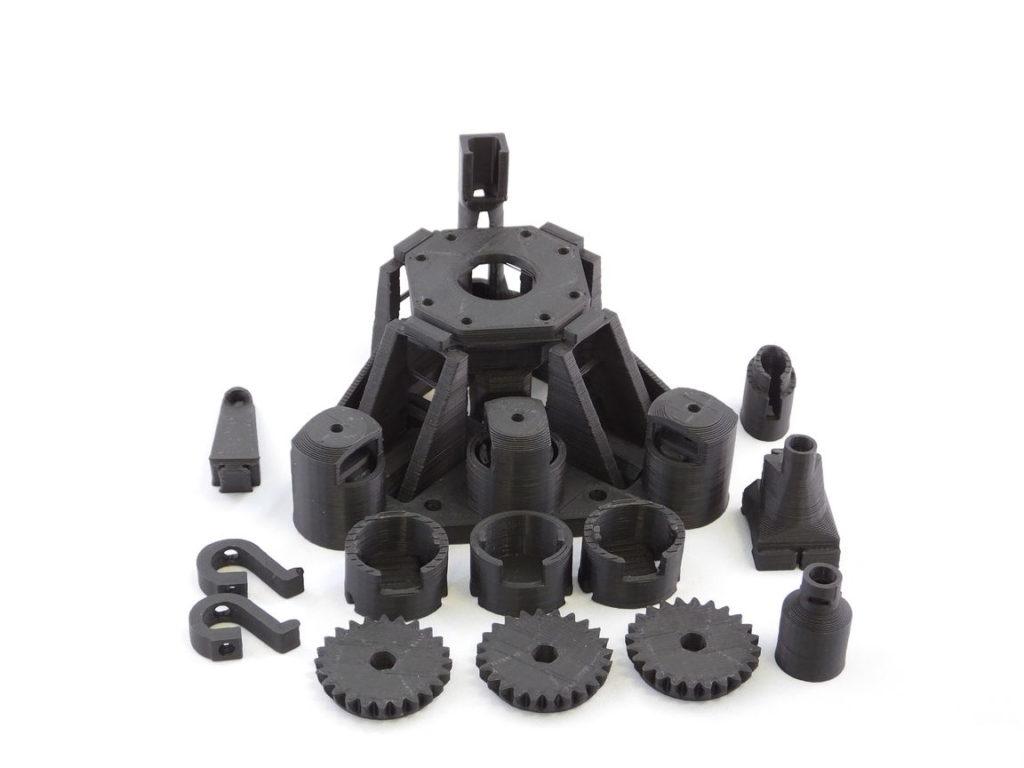I remember looking at some really interesting things through a microscope when I was in grade school, and wishing that I had my own. Eventually I did, but it was a plastic thing of poor quality, and I’m not really sure where it came from – I think someone may have given it to me after they got a better one, or something like that. Good microscopes were expensive, though. That’s not necessarily the case anymore. There are still plenty of pricey microscopes out there, particularly the high-quality, specialized kind, but nowadays, you can build or modify your own for minimal cost with a 3D printer, some cheap hardware, and a smartphone.
That’s neat, you might say, but what kind of quality can you really get from a DIY microscope? As a matter of fact, you can get excellent quality. In the case of the OpenFlexure microscope, a group of scientists from the University of Cambridge was able to obtain precision of up to 50nm.
The key to the OpenFlexure microscope is that it’s 3D printed from flexible plastic, which eliminates the friction and vibration that can interfere with the precision of conventional microscopes. It was developed as part of the WaterScope project, which was formed by a group of Cambridge academics in 2015 in order to create a fast, inexpensive water-testing kit to identify bacterial contamination in places that lack access to clean water.
“Testing water samples in the field rather than in a sterile laboratory is a challenge,” the WaterScope team explains. “The current ‘gold standard’ is that samples are gathered, taken back to the laboratory, a growth media is added, and the sample is incubated at a constant temperature to see if bacteria colonies are growing. This usually takes at least 24 hours.”
In contrast, the WaterScope kit takes one to two hours and is completed onsite, with no complex lab equipment required. The OpenFlexure microscope is one of the key components of the kit. Connected to a Raspberry Pi, the 3D printed microscope takes high-resolution time-lapse images of bacteria as it grows within a water sample that has been gathered and filtered to concentrate the bacteria in a small space. Those images are then wirelessly transferred to a computer, tablet or smartphone, and can be uploaded to a database to create a map of water quality that will allow WaterScope to more accurately direct aid groups.
 According to WaterScope, the small, lightweight, inexpensive kit will allow more sites of concern to be tested more frequently – and the OpenFlexure scope itself is open source, inviting anyone to build and modify their own. The microscope is designed to print without supports, and it’s easy to assemble; you can find full step-by-step instructions here. The files can be downloaded from GitHub, or you can buy a ready-to-assemble kit from the WaterScope site for £50.
According to WaterScope, the small, lightweight, inexpensive kit will allow more sites of concern to be tested more frequently – and the OpenFlexure scope itself is open source, inviting anyone to build and modify their own. The microscope is designed to print without supports, and it’s easy to assemble; you can find full step-by-step instructions here. The files can be downloaded from GitHub, or you can buy a ready-to-assemble kit from the WaterScope site for £50.
If you’d like to learn more about the flexible 3D printed design of the OpenFlexure microscope, you can read about the device’s development in a paper entitled “A one-piece 3D printed flexure translation state for open source microscopy,” authored by James P. Sharkey, Darryl C.W. Foo, Alexandre Kabla, Jeremy J. Baumberg, and Richard W. Bowman.
The WaterScope project is still in development, but the team hopes that thousands of the kits will end up in the field all over the world to test for dangerous pathogens including E.coli, Listeria, Legionella, and others.
You can learn more about the WaterScope project and check out a time-lapse video of the body being printed on a 3D printer from Ultimaker below:
Discuss in the OpenFlexure forum at 3DPB.com.
Subscribe to Our Email Newsletter
Stay up-to-date on all the latest news from the 3D printing industry and receive information and offers from third party vendors.
You May Also Like
Supply Chain Management and the Role of 3D Printing Digital Inventories
As the additive manufacturing (AM) industry grows beyond its humble roots as a rapid prototyping technology, it has been adopted by some of the world’s leading companies to produce not...
3D Printing Webinar and Event Roundup: April 28, 2024
In this week’s 3D Printing Webinar and Event Roundup, the Ceramics Expo is taking place in Michigan, Stratasys continues its advanced training courses, and SPE is holding a Polymer Characterization...
$25M to Back Sintavia’s Largest Expansion of Metal 3D Printing Capacity Since 2019
Sintavia, the digital manufacturing company specializing in mission-critical parts for strategic sectors, announced a $25 million investment to increase its production capacity, the largest expansion to its operations since 2019....
Velo3D Initiates Public Offering in a Bid to Strengthen Financial Foundations and Drive Future Growth
Velo3D (NYSE: VLD) has been among a number of publicly traded 3D printing firms that have attempted to weather the current macroeconomic climate. After posting a challenging financial report for 2023,...

































